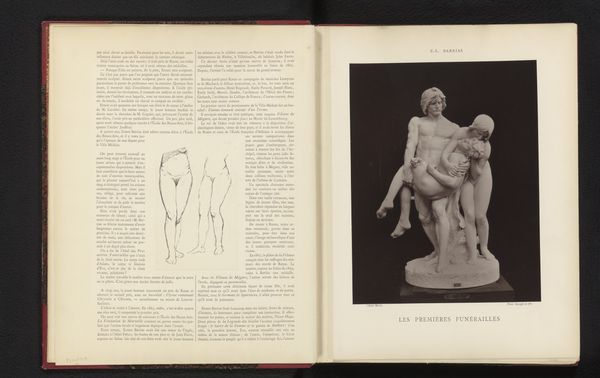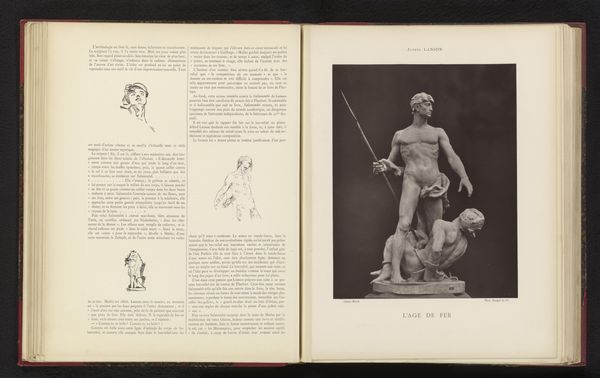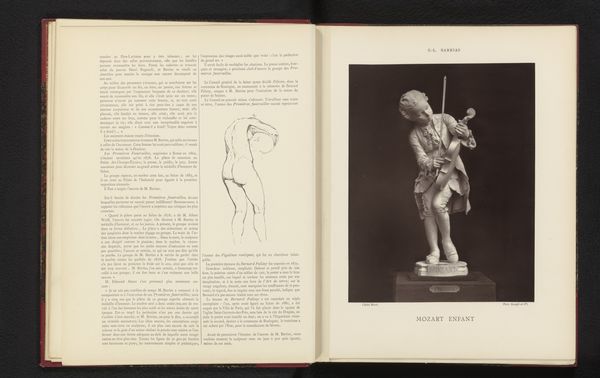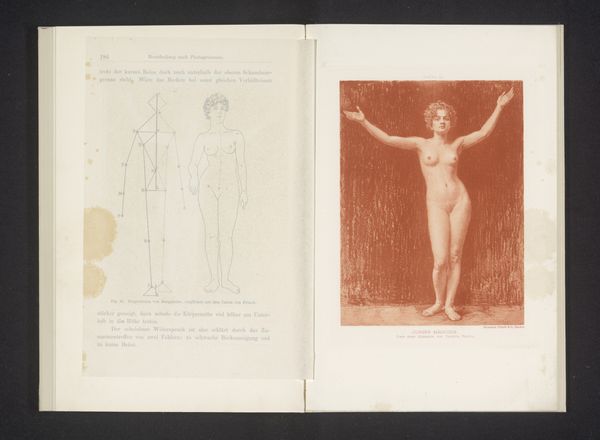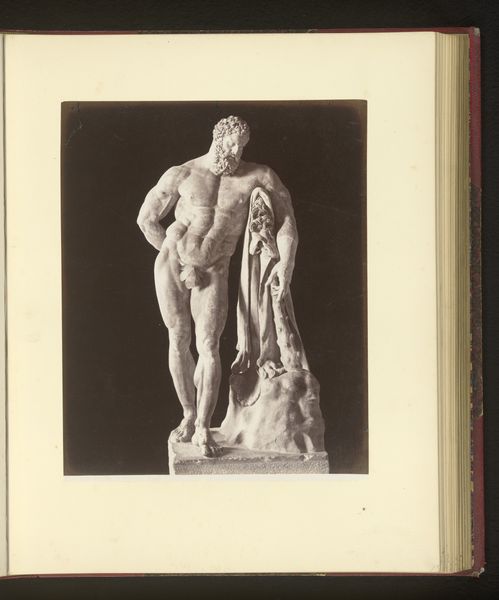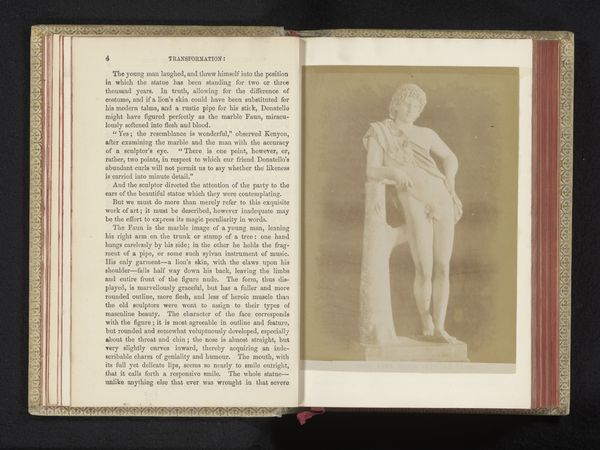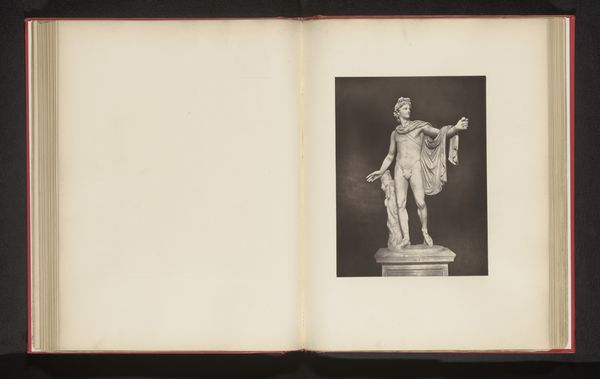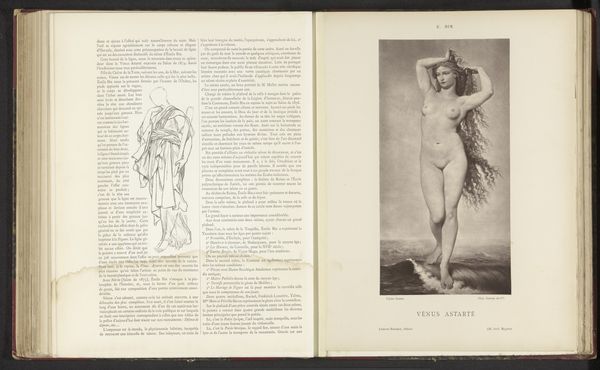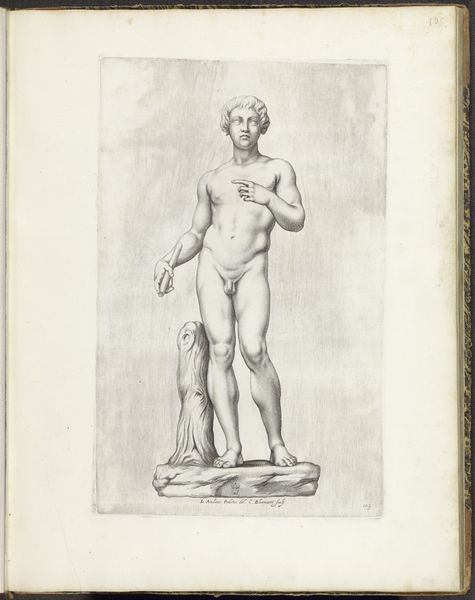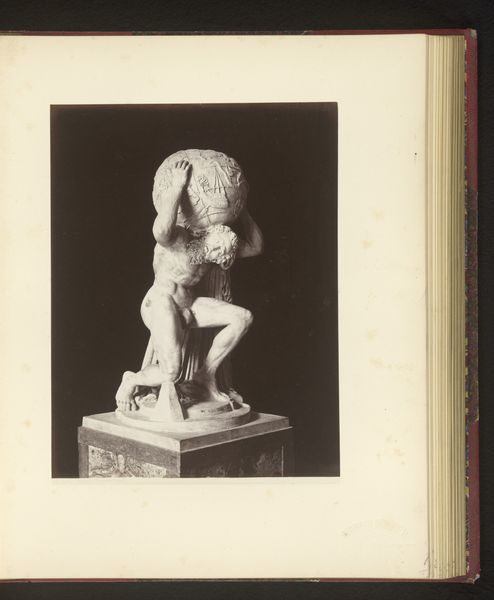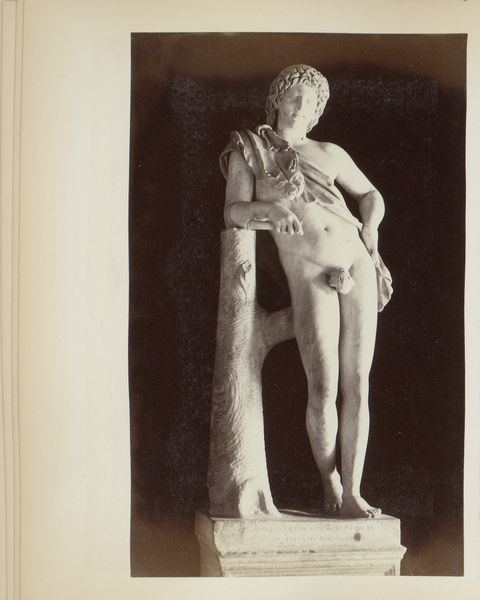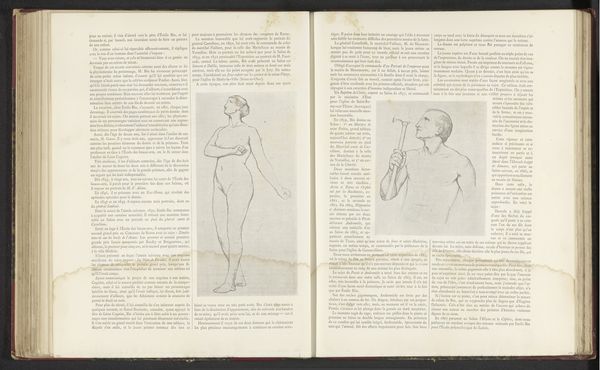
Sculptuur 'Le serment de Spartacus' door Louis-Ernest Barrias before 1884
0:00
0:00
adolpheblock
Rijksmuseum
drawing, print, paper, ink, sculpture, marble
#
portrait
#
drawing
# print
#
classical-realism
#
paper
#
ink
#
sculpture
#
history-painting
#
academic-art
#
marble
#
nude
Dimensions: height 240 mm, width 195 mm
Copyright: Rijks Museum: Open Domain
Curator: Here we have a photographic print from before 1884, presenting Louis-Ernest Barrias's marble sculpture, "The Oath of Spartacus," currently housed in the Rijksmuseum. Editor: Immediately, it evokes this feeling of somber heroism. There's this palpable tension, a silent promise being made. It feels incredibly… intimate, almost voyeuristic, to witness this moment. The monochrome adds a timeless quality, stripping away any distractions from the raw emotion. Curator: Barrias sculpted "The Oath of Spartacus" during a period where academic art and classical realism were highly valued. This sculpture illustrates a key moment linked to ideas circulating in France around this time on social justice and resistance, echoing the figure of Spartacus as a symbol of freedom and rebellion against oppression. It was intended to communicate an aspiration for a more just and equitable social order. Editor: Rebellion made immortal! The way the figures are intertwined speaks of deep trust and reliance. I'm struck by how the composition leads your eye; it's like they are a unit against the world, and they will overcome every adversity. Even in stillness, the sculpture emanates tremendous dynamism. You could get lost for hours appreciating its nuanced musculature. Curator: This piece, along with others from the period, illustrates how artists would choose their sculptural subjects carefully. It highlights a tension. Artists sought critical recognition from official channels while addressing popular political topics in society to grow in cultural influence. Barrias' work navigated the intricate terrain of social engagement and artistic recognition in late nineteenth-century France. Editor: It makes you wonder about the context of it all. Where would something like this have been displayed initially? A bourgeois home? A museum? And what sort of conversations would it ignite? Thinking of it this way makes my brain crackle! What about yours? Curator: Museums often grapple with similar questions regarding the place and purpose of historical pieces. As we've seen, artworks like these capture evolving societal values and reveal the intricate dynamic between art, power, and politics. Editor: To see echoes of yesterday in a sculpture, breathing and rippling into our present... art keeps us so alert and mindful, which is invaluable.
Comments
No comments
Be the first to comment and join the conversation on the ultimate creative platform.
